Global Green Community & Climate Action Center (CCAC)
New Orleans will be the first American city lost to sea level rise unless dramatic measures are taken. It is ground zero for Climate Change. Global Green's Community & Climate Action Center serves as a model for climate resilience within both New Orleans, and other cities around the globe.
The CCAC is a hub for educational opportunities with a focus on climate change, environmental equity and coastal resilience. It is located in the Holy Cross neighborhood of New Orleans’ Lower 9th Ward. Global Green works with numerous partners to bring programming to the CCAC.
The space is available to groups for workshops and educational events. Groups can be local, regional, national or international. The CCAC is an ideal venue for sharing mitigation and adaptation strategies for climate impacts with coastal communities along the Gulf - and worldwide - as well as with other geographies threatened by global warming.
The CCAC houses a green building resource information station and is developing capacity to offer additional community resources.
The Community & Climate Action Center is an ideal venue for your organization's next convening.
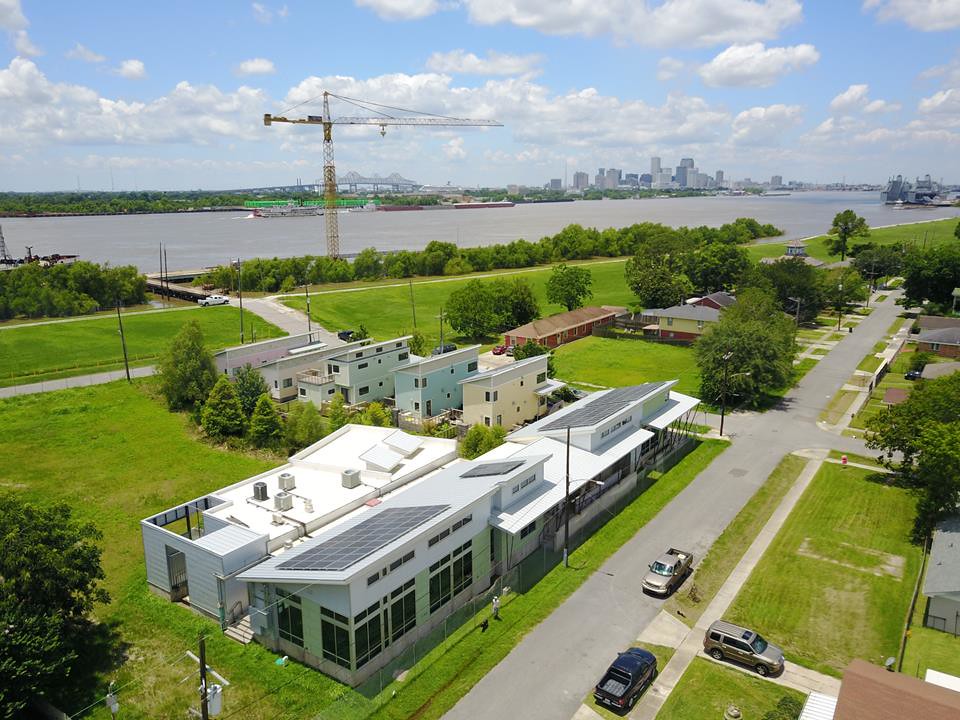
A Catalytic Project
Climate change is significantly impacting people and industries in the Greater New Orleans region, but there is a lack of community understanding and tangible opportunities for taking action.
The Community & Climate Action Center (CCAC) will serve as a hub for communication around solutions to climate change through mitigation and adaptation planning. The Center aims to create powerful connection, and empower communities to take their own steps in climate action.
Disaster Response Center & Resilience Hub
The Center, in the event of a natural or man-made disaster, doubles as a first response and rapid return location. The building’s structure allows high wind and water resistance, as well as solar power with battery back-up to provide essential electrical services such as lighting, refrigeration for medication, cell phone charging and communications.
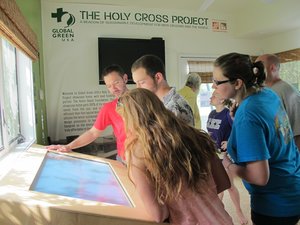
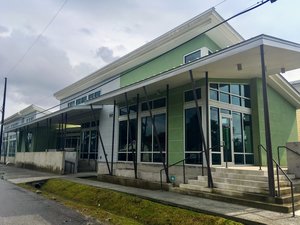

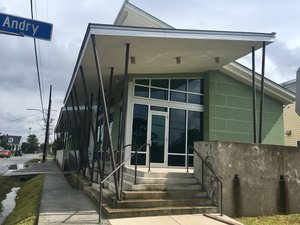
Global Green's Climate Action Center, located in the Lower 9th Ward of New Orleans, will be the first of its kind to bring climate change education and models of resiliency to the community level. The Center will serve the Greater New Orleans region and will be a place to build awareness, share resources and catalyze innovation.

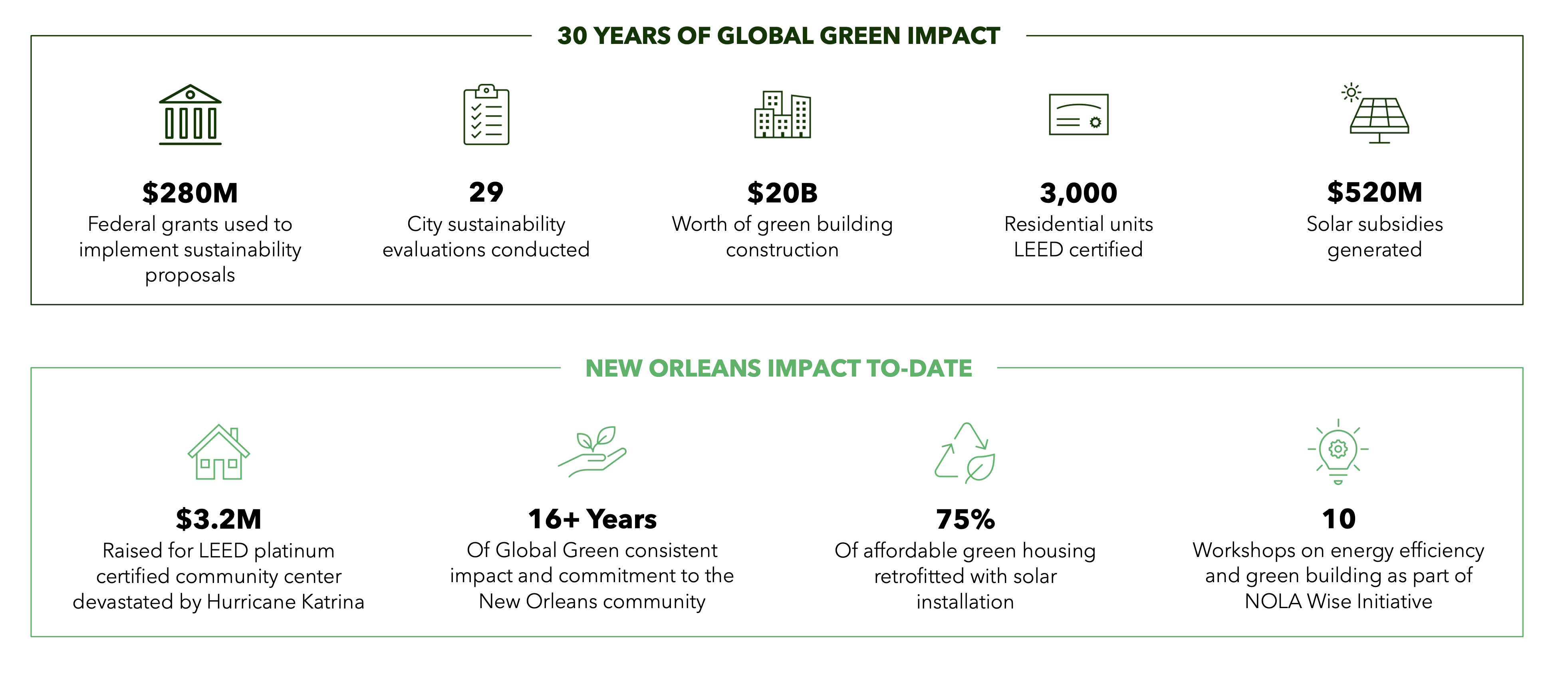
2005 HURRICANE KATRINA
Hurricane Katrina devastates New Orleans and the Gulf Coast. Global Green puts forth a vision for the green rebuilding of New Orleans, including greening schools and homes, and commits a permanent office in the City.2006 SUSTAINABLE DESIGN COMPETITION
The Sustainable Design Competition with jury chair Brad Pitt is announced, and 125 designs are submitted for a net zero energy housing and community center development in the Holy Cross neighborhood of the Lower 9th Ward.2007 BREAKING GROUND
Global Green commits to building five single-family houses and the Community Development and Climate Action Center (CDCAC) with the help of lead funding partner, The Home Depot Foundation.2007 GREEN SCHOOLS
Global Green provides guidelines and resolution for New Orleans’ Recovery School District to rebuild schools to LEED Silver standards.2008 BUILD IT BACK GREEN
The Build It Back Green (BIBG) program is launched which reaches over 20,000 people and provides low-income residents with free and trustworthy technical assistance on how to make their homes more energy-efficient, storm-resistant, and healthier.2009 GROWING EXPERIENCE
Using lessons learned on the first Holy Cross Project home, the additional four homes are re-designed and construction begins. The BIBG Green Building Resource Center was named “Best Recovery Resource” by Neighborhood Partnership Network.2010 NATURE CALLS
A bioswale is installed at the Holy Cross Project by volunteer groups to reduce strain on the storm water system, clean runoff water, and demonstrate green infrastructure. Vice President Biden announces federal stimulus funding for the Holy Cross Project.2011 GLOBAL VISITORS
The visitor center welcomes its estimated 20,000th visitor, with students, tourists, US Congressional members and members of President Obama’s cabinet included in learning more about green design and building techniques.2011 NOLA WISE
NOLA Wise residential energy efficiency and job training program is launched in partnership with the City of New Orleans, which retrofitted 170 single family homes saving a combined total of 763,170 kilowatt hours of energy per year for participating families.2012 FIRST HOMEOWNERS
Four of the Holy Cross Project LEED Platinum single family homes are sold to non-profit employees and public school teachers. Electricity and gas bills for the homes average under $30 per month thanks to energy efficiency andsolar power.2013 WATER WISE NOLA
Water Wise NOLA is launched to educate and empower residents with DIY green infrastructure methods they can implement to reduce flooding, prevent subsidence, protect the water quality of Lake Pontchartrain, and beautify their neighborhoods.2014 COMMUNITY & CLIMATE ACTION CENTER
Structural Insulated Panels (SIPs) are installed to create the CDCAC’s exterior building shell. Global Green is the first to use SIPs for a commercial project in New Orleans, increasing energy efficiency and structural integrity of the building.2022 2.0 PROGRAM REBOOT
The original project in partnership with Brad Pitt gave residents a chance to live in sustainable, green, energy efficeint and disaster-proof homes. Together they built five single-family homes and a community center. In the following years - and outside of the Global Green initiative - an additional 109 homes were built. However, many of these homes were not crafted up to the same standard as the original and now suffer in disrepair or are uninhabitable. Using Global Green's Climate Action Center as the hub to build comprehensive solutions to climate change mitigation and adaptation, the program reboot will rehabilitate the community houses by creating connections and empowering its resident who will participate and oversee the reconstruction phase. This phased initiative will repair and rebuild these homes with the original vision in mind: innovative, conscientious, safe and green focused homes that will serve as statewide blueprint for green affordable housing and inclusive communities.2023 GLOBAL GREEN COMMUNITIES
A Global Green Community is both our aspirational goal for cities globally and a program consisting of tailored initiatives that enable a brighter, more sustainable future for residents in need and the environment. Common elements of a Global Green Community are Affordable Green Housing, Organic Food Centers, Open Parks & Recreational Spaces, a LEED-Certified Community Center, a Recycling Center and a Climate Emergency and Adaptation Education Program.
